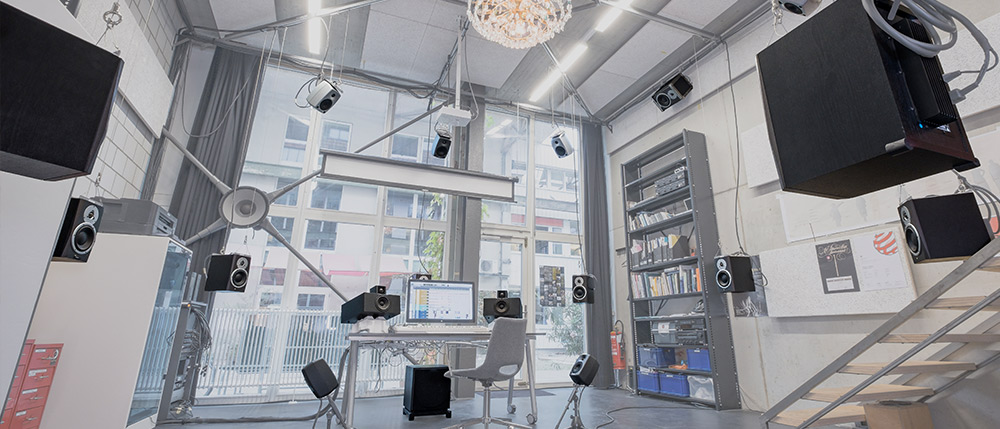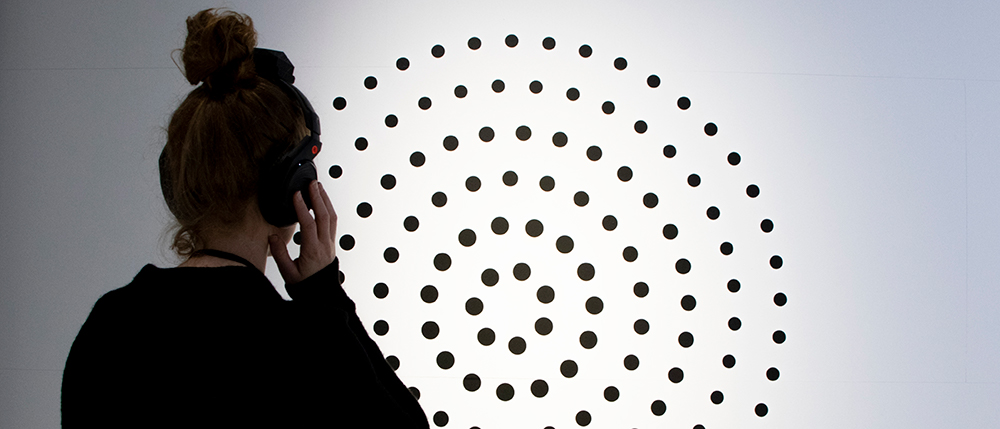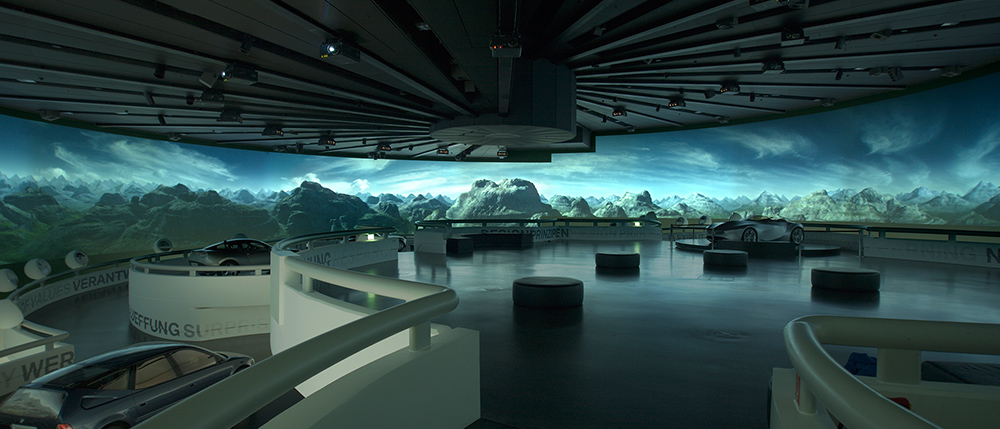Simulated Reality
3D-Audio
There is - with few exceptions - no sound without space and no space without sound. But which criteria do we use to create space? How does a space create atmosphere? And what makes a sonic experience feel spatial? The design of sonic spaces has enormous potential; what we hear strongly influences how we perceive visual stimuli. Therefore, space should be consciously designed with and for sound.
Audio Scenography is at the core of Idee und Klang Audio Design’s work and spatial sound composition is our specialty. It is no surprise then, that we explore and actively research all possible facets of spatial sound creation. All these techniques run under the name 3D-Audio. Different to the AROS which uses the actual room as a resonating body, these systems project a virtual sonic space into a physical space, similar to a 3D projection onto a movie screen. This allows the simulation of any desired space and the position of sounds within.
The systems can be broadly categorised as follows:
- Speaker-based, discrete: Auro-3D, Dolby Surround formats
Project references: Museum of the Future 2017, WW1 Centenary Exhibition
- Speaker-based, scalable / object-based: Dolby Atmos, WFS
Project references: GAC, Magic Box
- Headphone-based, static: binaural recordings or mixes
Project references: Basel findet Stadt, 1515 Marignano, Echo Topos
- Headphone-based, dynamic: virtual reality applications, ambisonic recordings.
Project references: Sounds of Silence




